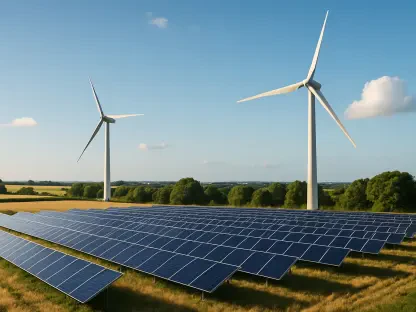I’m thrilled to sit down with Christopher Hailstone, a renowned expert in energy management and renewable energy with a deep focus on electricity delivery and grid reliability. With years of experience in the utilities sector, Christopher has been at the forefront of addressing the evolving challenges of power stability, especially as digital infrastructure like data centers places unprecedented demands on the grid. Today, we’ll dive into the complexities of data center power volatility, the limitations of current technologies, and the promising role of innovative solutions like flow batteries in shaping a more resilient energy future.
Can you start by explaining what ‘data center volatility’ means in terms of power usage and why it’s such a big deal for the grid?
Absolutely, Silvia. Data center volatility refers to the unpredictable and rapid fluctuations in power demand that modern data centers, especially those running AI workloads, place on the grid. Unlike traditional computing, which has a relatively steady power draw, AI processes can spike or drop thousands of times a second. This creates a demand curve that’s erratic, almost like a heartbeat on a monitor. For the grid, this is a massive challenge because it’s not built for such fast swings. Local feeders and substations can get overwhelmed, leading to instability or even equipment failures if not managed properly.
What specific issues are utilities and grid operators grappling with because of these sudden power swings?
The biggest issue is the strain on infrastructure. When a data center pulls a huge amount of power one moment and then drops off the next, it stresses transformers and other equipment at the local level. Frequency control becomes a nightmare, and you might even see backup generators kicking in unnecessarily, which is inefficient and costly. For instance, imagine a 300-MW data center campus acting like a strobe light—pulling hard, then easing up unpredictably. This can cause transformers to trip or create harmonic distortions that ripple through the system, potentially disrupting other users on the same grid.
You’ve mentioned that this challenge was underestimated. Can you unpack why that happened?
Sure. The risks weren’t entirely unknown; engineers and industry folks have been flagging concerns about rapid demand changes and grid stress for a while now. But the sheer speed and scale of data center growth caught everyone off guard. We went from a few large-scale sites to a nationwide boom of gigawatt-level projects almost overnight. The grid adaptations—upgrading equipment, rethinking load management—simply couldn’t keep pace with construction. It’s a classic case of innovation outrunning infrastructure readiness.
How are new large loads, like AI campuses and crypto mining operations, reshaping grid behavior?
These new loads are fundamentally different from traditional industrial demands. Their growth is hard to predict—data centers can scale up or shift operations quickly based on market needs, and crypto mining can move locations overnight. This unpredictability makes planning tough for grid operators. Plus, their extreme ramp rates—how fast they increase or decrease power draw—create coordination headaches for utilities. It’s like trying to balance a seesaw with someone jumping on and off without warning. The grid has to constantly adjust, which can destabilize the whole system if not handled with precision.
You’ve said every data center will play a role in grid stability. What does that mean for the operators running these facilities?
It means data center operators are no longer just consumers of power; they’re becoming active participants in grid health. They’ll need to adopt new standards around power quality and ramp control, ensuring their operations don’t destabilize the system. This could involve investing in on-site solutions to manage their load profiles or working closely with utilities on demand response strategies. The opportunity here is huge—data centers can shift from being a stress point to a stabilizing force by smoothing out their own power fluctuations and even supporting the grid during peak times.
Let’s dive into the technology. Why isn’t lithium-ion battery technology the right fit for managing these power fluctuations at data centers?
Lithium-ion batteries have been great for short bursts of power, like in electric vehicles or brief backup scenarios, but they’re not built for the constant cycling that data centers require. They degrade over time with frequent charge-discharge cycles, losing capacity and efficiency. When you’ve got a data center with a power curve that’s all over the place, lithium-ion just can’t keep up without wearing out quickly. That makes them less cost-effective and reliable for smoothing out those rapid fluctuations over long periods.
You’ve pointed to flow batteries as a promising alternative. Can you explain why they’re better suited for this challenge?
Flow batteries are a game-changer for applications like data centers because they’re designed for endurance and continuous cycling. Unlike lithium-ion, they don’t degrade with use, so they can handle thousands of charge-discharge cycles without losing performance. They work by storing energy in liquid electrolytes in external tanks—think of them as engines with fuel tanks. This setup allows them to scale easily and respond in real time, absorbing or releasing power within milliseconds to smooth out spikes before they hit the grid. They’re steady and durable, perfect for managing a data center’s erratic demand.
What exactly does ‘long-duration energy storage’ mean in the context of data centers, and why is it so important?
Long-duration energy storage refers to systems that can store and release power over extended periods—think hours rather than minutes. For data centers, this is critical because they need both immediate response to sudden spikes and sustained support during longer demand shifts or grid outages. Flow batteries, for example, can sit at the connection point, conditioning power instantly while also providing backup for hours if needed. This dual capability ensures servers stay online and the grid remains stable, bridging the gap between short-term backup and true energy resilience.
Looking ahead, what’s your forecast for how energy storage solutions will evolve to meet the needs of digital infrastructure and grid stability?
I think we’re on the cusp of a major shift. As data centers continue to grow and become integral to grid operations, energy storage will move beyond just backup to being a core component of power management. Flow batteries and other long-duration technologies will likely become standard at new facilities, integrated right into their design. We’ll also see more collaboration between utilities and operators to create smarter, more responsive systems—think real-time load balancing on a massive scale. The grid of the future won’t just accommodate data centers; it’ll be built with them as active partners, and storage tech will be the glue holding that partnership together.









